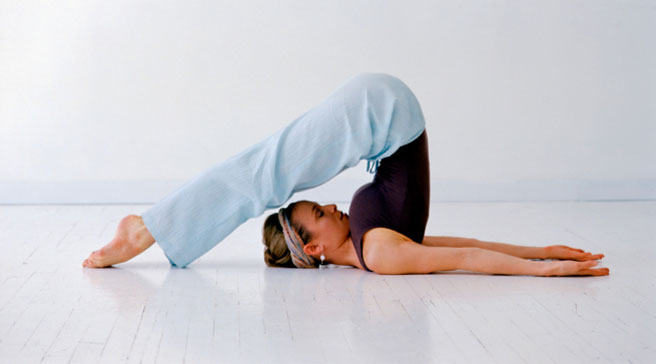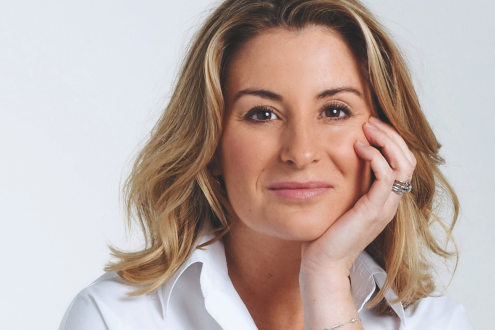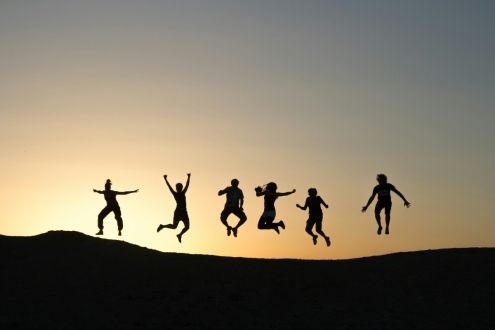Psychologies yoga series

This month, Psychologies brings you the ultimate guide to yoga. Inside the magazine you can work out which style is right for you, whether you want yoga to de-stress, relieve pain, work your body, or enrich your spiritual side. And to accompany the feature, every Monday this month our favourite experts will be giving you a 10-minute yoga exercise to try. Today it’s yoga for those who exercise a lot, and it has been devised by Katie Courts, a yoga instructor at The Third Space (020 7439 6333), who runs their Yoga Sports class. Look out for parts two, three and four over the coming month. Part one: yoga for the exerciser Gym-goers, runners, cyclists and other athletes can use yoga to complement their activities; poses help your muscles stay flexible, your core stay strong and your internal system open and free. The three postures below, which you should do at the end of a session while your body is still warm, will help you get the most from your workouts.
The postures
LUNGES Many injuries or chronic pain in the lower back, knees, spine and hips are caused by tight hip flexors, buttock muscles, and the muscles at the front and back of the thighs. Lunges are a wonderful way to get into these large, tight muscle groups.
1. Start in downward-facing dog. Inhale, and lunge the right foot between the hands; drop the left knee to the floor.
2. Take both hands to the front knee and start to drop the hips towards the floor. Try to deepen the stretch with each exhale. You should feel a deep stretch into the front of the left hip. If you can, take your hands up and over your head on an inhale, and drop down even deeper.
3. Try and stay in this pose for 10-15 breaths, then change sides.
CORE STRENGTHENERS These yoga poses are brilliant for strengthening and toning the abdominal area and building core strength.
The boat posture/ Navassana
1. It’s easier to come to the Navassana or boat pose from a sitting position. So, sit down with your legs out straight in front of you. Rock back off your sit bones as you exhale, drawing your navel towards your spine and activating your abdominal muscles.
2. Inhale, and pick up one foot at a time, holding your legs bent at a 90 degree angle, or straightening the legs away. Hold the arms at the sides of the knees, with straight elbows and the palms facing in. Hold for five slow breaths, come down on an exhale for one breath and then return to the Navassana position.
3. Try and do three rounds of five breaths each. Make sure you don’t collapse your spine in this posture, but keeping lifting at the breast bone, engaging your abdominal area by drawing your navel towards your spine.
The plank
1. Come to plank from a standing forward bend, by stepping each foot back or jumping both feet back together.
2. Make sure your plank is strong and well-aligned. You should be pushing out through your heels; your hips, shoulders and heels should be in one line and your knee-caps and abdominal muscles should be lifting so that there is strength running through the legs and abs. Don’t collapse the spine or allow the navel to sink. Try and hold for 30 seconds.
3. If you feel strong enough to, lower yourself to the press up position (or ‘chattaranga’) on an exhale. The heels, hip and shoulders should be in a line, but the elbows should bending at the sides. Make sure that your shoulders are down and away from the ears, not lifting up: this puts stress on the shoulder girdle. Hold for a few breaths.
4. Another strong variation is to try lifting up and down from plank to chattaranga and back to plank (similar to gym press-ups). This is excellent for creating strong shoulders and arm muscles – vital for a good yoga practice.
HIP AND HAMSTRING OPENER
Janu Sirsasana is a wonderful ‘all-round’ yoga posture: it opens the hips, stretches the hamstring and is a strong detoxifier.
1. Start from sitting upright with both legs outstretched in front of you. Try to sit on your sitting bones rather than collapsing back onto your tailbone.
2. Inhale, and bend up your right leg. Exhale, and place the sole of your foot alongside your left inner thigh. The more open the hip, the higher you can place your foot. Eventually you want your right heel to be able to sit on the right side of the groin, so the angle of your knee is a little over 90 degrees. This completely changes the feel of the stretch in the lower back as you fold forward and is a powerful lengthener.
3. Twist towards the left by rotating the rib cage and torso. Exhale, then fold forwards, trying to maintain the feeling of length through the spine. Draw your chest towards your left thigh, and take both hands to your left shin, ankle or foot. With each inhalation feel that you are lengthening your spine, and with each exhalation feel like you are folding forwards and down a little deeper.
4. Repeat for the other side.
THE WARM DOWN Finish with a simple spinal twist:
1. Lie on your back with your legs out straight.
2. Bend up your right knee and place your left hand to the outside of it.
3. Stretch your right arm above your head and twist your head to look up to it. 4. As you exhale, gently cross the right leg over the body towards the floor on the left side. Hold for 10 breaths. 5. Repeat for the other side.
Katie’s sports yoga class uses the benefits of the ancient yoga postures to enhance and improve regular sporting performance by building strength and flexibility in equal measure. Students will increase their cardiovascular fitness, work core and upper body strength, increase spinal freedom of movement in all directions, open hips and hamstrings and learn to use the breath to enhance stamina and recovery time.
More inspiration:
Read Yoga as a life lesson on LifeLabs









